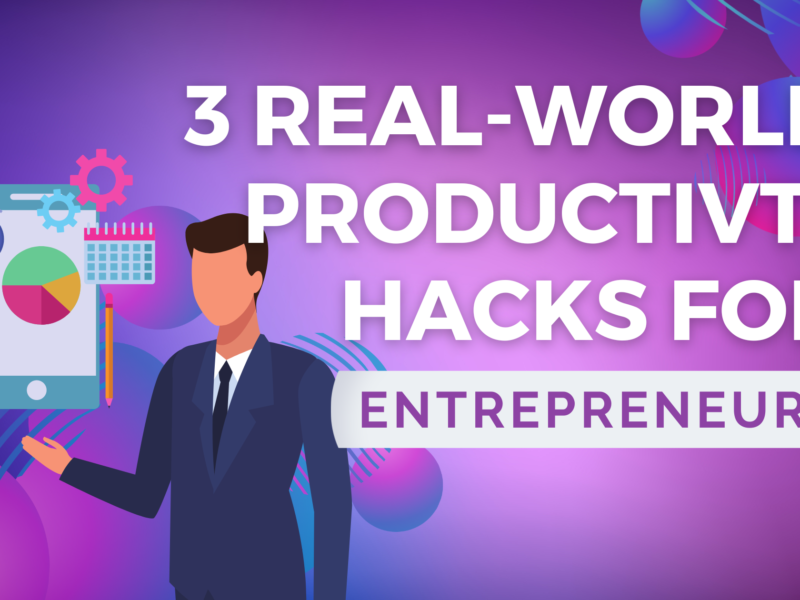Selling online can be a great way to reach more customers. It can also be very competitive.
How can you stand out and succeed? Whether you’re new to online selling or want to improve, these tips can help. Selling online involves more than just listing products. It requires understanding your audience, optimizing your listings, and providing excellent customer service.
We’ll explore ways to make your products more appealing and boost your sales. By following these tips, you can increase your chances of success and build a thriving online business. Let’s dive in and discover how you can sell smarter and more effectively online.

Credit: www.instagram.com
Choosing The Right Platform
Choosing the right platform is crucial for online selling success. The platform you select can impact your store’s functionality, user experience, and overall sales. Here are some tips to help you choose wisely.
E-commerce Platforms
There are many e-commerce platforms available. Each offers unique features. Popular options include:
- Shopify
- LaunchMyStore
- WooCommerce
- BigCommerce
- Magento
Consider your business needs. Are you selling physical products? Digital goods? Services? Each platform has strengths. LaunchMyStore is user-friendly. WooCommerce is great for WordPress users. BigCommerce offers scalability. Magento provides flexibility for developers.
Hosted Vs Self-hosted Solutions
Understanding the difference between hosted and self-hosted solutions is important. Hosted platforms manage your store’s technical aspects. Examples include LaunchMyStore & Shopify and BigCommerce. They handle:
- Security
- Server maintenance
- Updates
These platforms offer ease of use. But, they may have limitations in customization.
Self-hosted solutions give you more control. Examples include WooCommerce and Magento. With self-hosted platforms, you handle:
- Hosting
- Security
- Updates
This offers more flexibility. But, it requires technical knowledge. Consider your technical skills and resources. Choose the option that aligns best with your business needs.
Here’s a quick comparison:
| Aspect | Hosted | Self-Hosted |
|---|---|---|
| Ease of Use | High | Medium |
| Customization | Limited | Extensive |
| Technical Knowledge | Low | High |
Choosing the right platform can make or break your online store. Assess your needs and resources carefully. Select a platform that supports your business goals.

Credit: sell.amazon.com
Creating A User-friendly Website
In the competitive world of online sales, creating a user-friendly website is essential. A website that is easy to use can help you attract and retain customers. It can also improve your search engine rankings. Here are some tips to make your website user-friendly.
Responsive Design
A responsive design ensures your website looks good on all devices. From smartphones to desktops, your site should be adaptable. This means images, text, and buttons adjust automatically. To check if your site is responsive, you can use online tools or simply resize your browser window.
Here are some benefits of having a responsive design:
- Better User Experience: Users can easily navigate your site.
- Improved SEO: Search engines rank responsive sites higher.
- Increased Mobile Traffic: Many users browse on mobile devices.
Easy Navigation
Easy navigation helps users find what they need quickly. Start with a simple menu at the top of your page. Use clear labels for each section. For example, “Home,” “Shop,” “Contact Us,” and “About Us” are common menu items.
Consider the following tips for easy navigation:
- Use a Clear Menu: Keep it simple and organized.
- Include a Search Bar: This helps users find specific items.
- Add Breadcrumbs: This shows users their location on your site.
Below is a simple table that shows the common features of easy navigation:
| Feature | Description |
|---|---|
| Clear Menu | Organized and easy to understand |
| Search Bar | Helps users find specific items quickly |
| Breadcrumbs | Shows user’s location on the site |
Optimizing Product Listings
Optimizing your product listings is crucial for online sales success. It helps attract more customers and boosts your search engine ranking. Let’s explore some top tips for optimizing product listings.
High-quality Images
Images are the first thing customers notice. Use high-quality images to catch their attention. Here are some tips:
- Use a good camera or hire a professional.
- Show the product from different angles.
- Include close-up shots for details.
- Ensure proper lighting and a clean background.
High-quality images build trust and make your product more appealing.
Compelling Descriptions
A well-written description can make or break a sale. Follow these guidelines for compelling descriptions:
- Start with a short, catchy introduction.
- Highlight key features and benefits.
- Use bullet points for easy reading.
- Include relevant keywords for SEO.
Here is an example of a good product description:
| Feature | Benefit |
|---|---|
| High-Resolution Display | Clear and vibrant images |
| Long Battery Life | Use all day without charging |
| Lightweight Design | Easy to carry anywhere |
Clear, detailed descriptions help customers make informed decisions and can increase your sales.
Effective Pricing Strategies
Effective pricing can make or break your online sales. Setting the right price helps attract buyers and boost profits. There are several strategies to consider for setting competitive yet profitable prices.
Competitive Analysis
Research your competitors’ prices. Understand the market trends. This helps you set prices that are neither too high nor too low. Use tools to monitor competitor pricing. Adjust your prices accordingly to stay competitive.
Discounts And Offers
Offer discounts to attract more customers. Limited-time offers create urgency. Seasonal sales can boost your sales during holidays. Consider bundle deals for multiple products. This encourages customers to buy more.
Leveraging Social Media
Leveraging social media can greatly enhance your online selling efforts. Social platforms provide a direct line to your audience. They help you build brand awareness and drive sales. You can reach potential buyers where they spend their time. Let’s explore how to leverage social media effectively.
Building A Following
Start by creating profiles on popular platforms. Focus on sites like Facebook, Instagram, and Twitter. Share your brand story and product details. Use high-quality images and clear descriptions. Engage with users by responding to comments and messages. Consistent posting helps you stay visible. Host giveaways or contests to attract more followers. Collaborate with influencers to reach a broader audience.
Engaging Content
Create content that resonates with your audience. Use a mix of images, videos, and text. Show how your products solve problems. Share customer testimonials and reviews. Post behind-the-scenes glimpses of your business. Ask questions to encourage interaction. Use polls and surveys to gather feedback. Share tips related to your products. Engaging content keeps your audience interested and coming back for more.

Credit: prowess.org.uk
Seo Best Practices
To sell online successfully, mastering SEO best practices is crucial. By optimizing your online store, you can attract more visitors and convert them into customers. Let’s explore some essential SEO strategies.
Keyword Research
Start with keyword research. Identify what your audience is searching for. Use tools like Google Keyword Planner or Ubersuggest.
- Make a list of relevant keywords.
- Focus on long-tail keywords. They are less competitive.
- Analyze your competitors’ keywords.
Here’s a simple table to help you organize your keyword research:
| Keyword | Search Volume | Competition |
|---|---|---|
| online selling tips | 1,000 | Medium |
| best eCommerce strategies | 500 | Low |
| how to sell products online | 2,000 | High |
On-page Seo
On-page SEO involves optimizing individual web pages. This improves their ranking. Focus on these elements:
- Title Tags: Include your primary keyword in the title. Keep it under 60 characters.
- Meta Descriptions: Write a compelling meta description. Use keywords naturally. Aim for 150-160 characters.
- Headings: Use H1, H2, and H3 tags. Incorporate keywords.
- Content: Ensure your content is valuable and relevant. Include keywords without keyword stuffing.
- Images: Optimize images with alt text. Use descriptive filenames.
Following these on-page SEO practices can significantly improve your site’s visibility. Make sure each page is optimized for both search engines and users.
Enhancing Customer Service
Customer service plays a crucial role in online sales. Good service keeps customers happy and coming back. It’s important to make your customers feel valued. Let’s explore some tips to enhance your customer service.
Prompt Responses
Respond quickly to customer inquiries. Fast replies show you care about their needs. It also helps in solving issues before they escalate. Use automated responses for common questions. This can save time and provide immediate help.
Return Policies
A clear return policy builds trust. Make it easy for customers to return products. Ensure the policy is easy to find on your website. A hassle-free return process can lead to repeat business. Customers appreciate knowing they can return items if needed.
Analyzing Sales Data
Understanding your sales data is essential for online selling. It helps you make informed decisions and boost your revenue. By analyzing your sales data, you can identify trends, understand customer behavior, and fine-tune your strategies.
Tracking Metrics
To analyze sales data effectively, start by tracking the right metrics. Focus on these key indicators:
- Conversion Rate: The percentage of visitors who make a purchase.
- Average Order Value (AOV): The average amount spent per order.
- Customer Acquisition Cost (CAC): The cost to acquire a new customer.
- Customer Lifetime Value (CLV): The total revenue from a customer over time.
- Cart Abandonment Rate: The percentage of visitors who add items to their cart but do not complete the purchase.
Use tools like Google Analytics to track these metrics. Regularly review the data to spot patterns and insights.
Adjusting Strategies
Based on your data analysis, you might need to adjust your strategies. Here are some steps to consider:
- Identify Underperforming Products: Look for products with low sales and high returns.
- Optimize Pricing: Compare your prices with competitors and adjust if necessary.
- Improve Marketing Efforts: Focus on channels that bring the most traffic and conversions.
- Enhance Customer Experience: Ensure your website is user-friendly and offers easy navigation.
- Follow Up with Abandoned Carts: Use email reminders to encourage customers to complete their purchases.
Regularly review and adjust your strategies based on the data. This will help you stay competitive and improve your online sales.
Frequently Asked Questions
How Can I Start Selling Online?
Start by choosing a platform, setting up a store, and listing products.
What Platforms Are Best For Selling Online?
Popular platforms include LaunchMyStore , Shopify, Amazon, eBay, and Etsy. Choose one that fits your needs.
How Do I Attract Customers To My Online Store?
Use social media, SEO, and email marketing to attract customers. Create engaging content.
What Are Common Mistakes To Avoid When Selling Online?
Avoid poor product descriptions, bad photos, and ignoring customer reviews. Focus on quality and service.
How Can I Improve My Product Listings?
Write clear descriptions, use high-quality photos, and highlight key features and benefits.
What Is The Importance Of Customer Reviews?
Customer reviews build trust and credibility. Encourage happy customers to leave positive feedback.
Conclusion
Selling online can be simple with the right approach. Follow these tips. Know your audience. Use clear, attractive product photos. Write honest descriptions. Offer excellent customer service. Optimize your website for search engines. Stay updated with trends. Always test and improve.
Remember, consistency is key. Happy selling!


